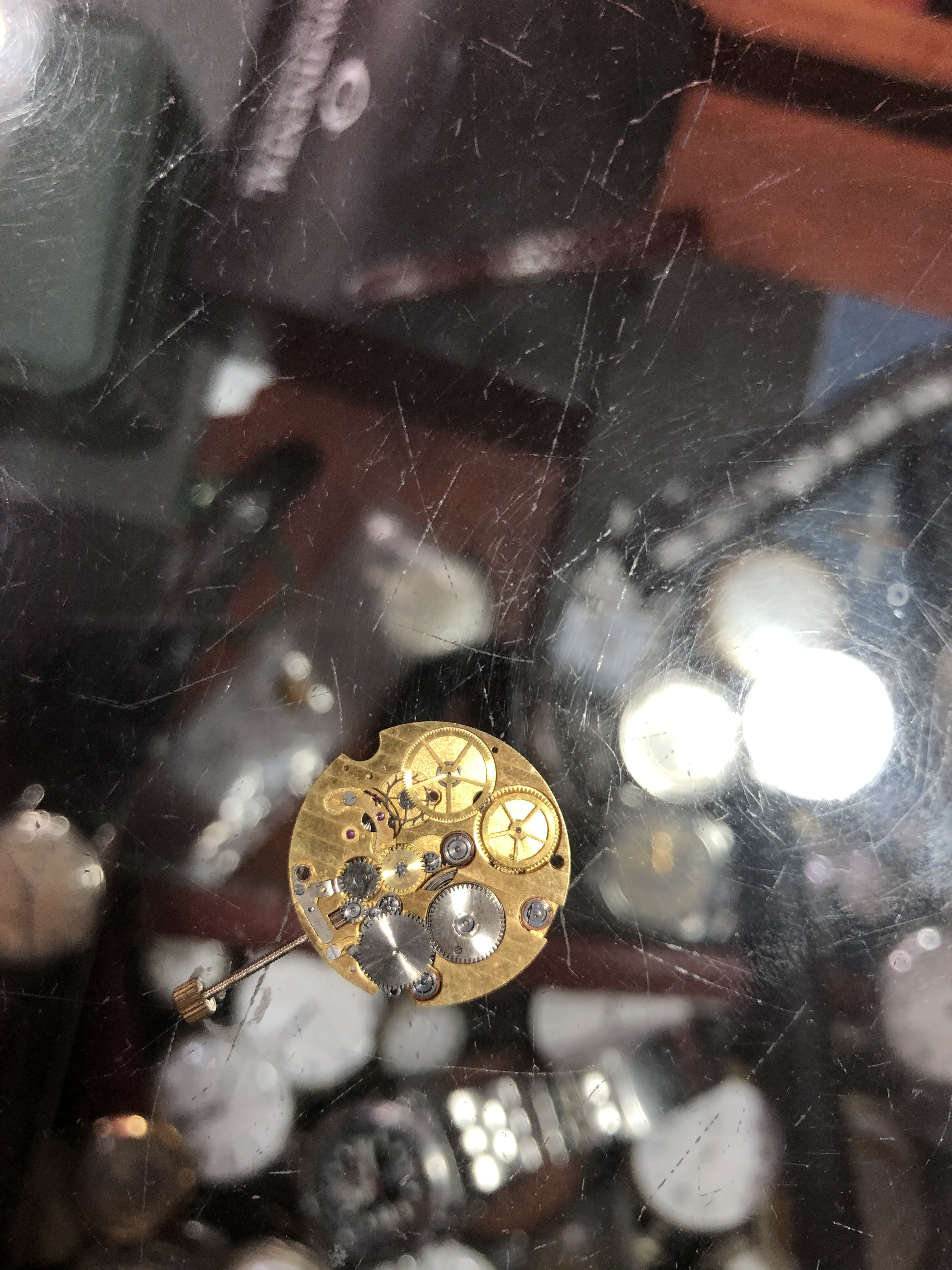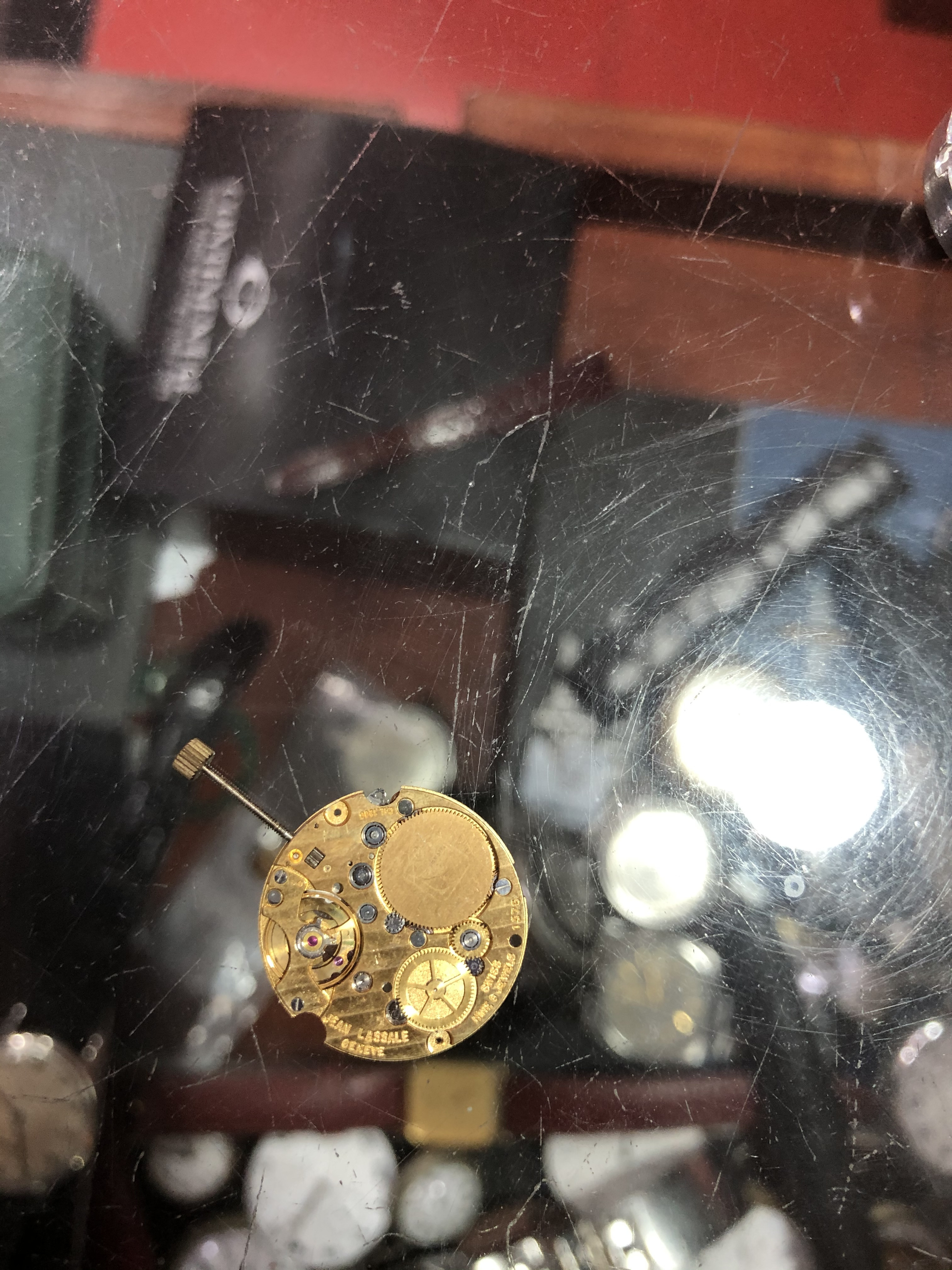Hello everyone,
I was at my watchsmith the other day and he showed me this ultra thin movement the Jean Lassalle Calibre 1200. I was blown away by the thinness of the movement so I made some research.
It says on Watch Wiki that:
"At the Basel Fair in 1976, Jean Lassale introduced the thinnest watch movement in history, the hand-winding Cal. 1200 and automatic Cal. 2000 at 1.20 mm and 2.08 mm, respectively. Designed by Pierre Mathys, it would become the company's claim to fame and their downfall, launched just as quartz movements were becoming prized. This movement caused a sensation and received much press for the young brand, however, with various models with tonneau, square, and round cases and a model with an integrated bracelet."
" Lassale is best known for their Calibre 1200, the thinnest in the world at that time. It was invented by Pierre Mathys in 1970 and brought to Lassale in 1975. It caused a sensation for a few years, before Lassale went bankrupt and was acquired by Seiko Group in 1979. The movement technology went to Nouvelle Lemania in 1982 and was used by Piaget and Vacheron Constantin.
One of the primary technical tricks was to mount all moving components on one side only, with the other “flying”. The barrel (with mainspring and ratchet wheel) was free-floating, guided by three side ball bearings rather than a traditional pivot, and also held the ratchet wheel, mounted on another ball bearing. Microscopic ball bearings were used instead of pivots for most wheels. Everything was supported on a single plate with no bridges apart from the pallet and balance. Despite the thin profile, the movement presented at the Basel Fair operated at 28,800 A/h and had a 50 hour power reserve.


I was at my watchsmith the other day and he showed me this ultra thin movement the Jean Lassalle Calibre 1200. I was blown away by the thinness of the movement so I made some research.
It says on Watch Wiki that:
"At the Basel Fair in 1976, Jean Lassale introduced the thinnest watch movement in history, the hand-winding Cal. 1200 and automatic Cal. 2000 at 1.20 mm and 2.08 mm, respectively. Designed by Pierre Mathys, it would become the company's claim to fame and their downfall, launched just as quartz movements were becoming prized. This movement caused a sensation and received much press for the young brand, however, with various models with tonneau, square, and round cases and a model with an integrated bracelet."
" Lassale is best known for their Calibre 1200, the thinnest in the world at that time. It was invented by Pierre Mathys in 1970 and brought to Lassale in 1975. It caused a sensation for a few years, before Lassale went bankrupt and was acquired by Seiko Group in 1979. The movement technology went to Nouvelle Lemania in 1982 and was used by Piaget and Vacheron Constantin.
One of the primary technical tricks was to mount all moving components on one side only, with the other “flying”. The barrel (with mainspring and ratchet wheel) was free-floating, guided by three side ball bearings rather than a traditional pivot, and also held the ratchet wheel, mounted on another ball bearing. Microscopic ball bearings were used instead of pivots for most wheels. Everything was supported on a single plate with no bridges apart from the pallet and balance. Despite the thin profile, the movement presented at the Basel Fair operated at 28,800 A/h and had a 50 hour power reserve.
- JL1200 was 20.4 mm in diameter, 1.2 mm thick and used 13 0.24 mm ball bearings, a novel design. It had 11 jewels, and a power reserve of 35 hours.
- JL2000 was an automatic variant of Calibre 1200. It was 2.08 mm thick, had 18 ball bearings, and a gold or platinum central automatic rotor


